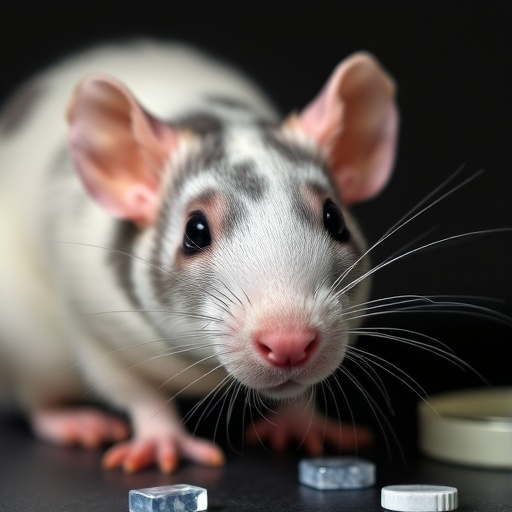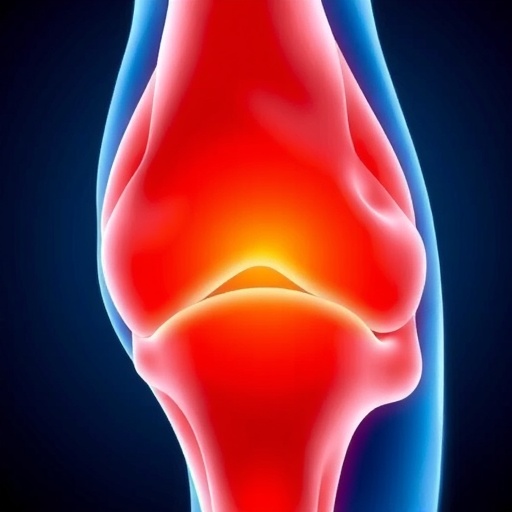
In a groundbreaking study that has drawn considerable attention, researchers have explored the correlation between early postnatal right-to-left patent ductus arteriosus (PDA) shunting and severe outcomes in neonates diagnosed with congenital diaphragmatic hernia (CDH). The findings, encapsulated in a retrospective cohort study, raise critical questions about neonatal care practices and signal a dire need for enhanced monitoring and intervention strategies for at-risk infants.
Congenital diaphragmatic hernia, a developmental defect characterized by an abnormal opening in the diaphragm, has long been known to contribute to significant respiratory distress and related complications shortly after birth. The resultant displacement of thoracic organs can compromise lung development, leading to hypoplasia and insufficient gas exchange. Yet, the intricate interplay between such structural abnormalities and additional cardiac complications has not been as thoroughly delineated in the existing body of literature.
The patent ductus arteriosus, a vessel that connects the pulmonary artery to the descending aorta, typically closes shortly after birth. However, in some neonates, particularly those with congenital anomalies like CDH, this vessel can remain open or function abnormally, leading to a right-to-left shunt. Such shunting can exacerbate hypoxemia and pulmonary hypertension, hampering overall cardiovascular and respiratory function. This relationship is central to understanding the severe outcomes associated with neonates suffering from CDH.
The retrospective cohort study conducted by Kwak et al. examined data from infants diagnosed with CDH, specifically focusing on the prevalence and impact of early postnatal right-to-left shunting via PDA. The researchers meticulously reviewed the medical histories, including imaging and clinical outcomes, of these neonates, meticulously analyzing mortality rates, the necessity for surgical intervention, and long-term morbidities.
Findings revealed that those with PDA-related right-to-left shunting faced significantly higher morbidity and mortality rates compared to their counterparts without such shunting. The implications of these results are profound, suggesting that early identification of PDA and its hemodynamic effects could be vital in this vulnerable population. Early intervention may mitigate some of the dire consequences associated with CDH, allowing practitioners to tailor more effective treatment plans.
The research highlights the importance of vigilant monitoring in the neonate population, particularly among those with pre-existing congenital conditions. Clinicians are urged to consider the dual burden of pulmonary and cardiac anomalies in affected infants, ensuring that comprehensive assessments are a standard part of neonatal care during the critical early postnatal period.
The implications for practice extend beyond immediate clinical considerations. Findings from this study may catalyze research into preventative strategies and treatment modalities, encouraging the exploration of pharmacologic interventions that could support ductal closure in the earliest stages of such cases. Furthermore, standardizing protocols for the assessment of PDA in neonates with CDH could improve outcome trajectories significantly.
In terms of health policy, the study advocates for an integrated approach to managing congenital diaphragmatic hernia that encompasses both surgical and medical interventions. Such a paradigm would necessitate interdisciplinary collaboration among neonatologists, pediatric surgeons, cardiologists, and other specialists to ensure comprehensive patient care.
Critically, this research adds to the growing body of evidence advocating for a more inclusive understanding of congenital heart defects in the context of other neonatal anomalies. While isolated management of CDH may have been the traditional approach, it is becoming increasingly clear that multi-faceted strategies targeting associated pathologies will yield better outcomes.
As the medical community digests these findings, there could be a significant shift in policies regarding monitoring protocols and treatment guidelines for neonates diagnosed with congenital heart and lung anomalies. It also raises pressing questions about insurance coverage for such intensive care measures, especially in light of the financial burden families face when navigating complex health issues within a vulnerable neonate.
In conclusion, the study led by Kwak et al. offers a crucial perspective on the implications of early PDA shunting in neonates with congenital diaphragmatic hernia. As additional research builds upon these findings, a clearer understanding of interventions that can support better outcomes for affected infants may soon emerge, potentially changing the landscape of neonatal care.
This new research not only highlights the complexities of managing multiple congenital anomalies but also underscores the pressing need for advancements in clinical protocols to improve survival and quality of life for these newborns. As the fields of neonatology and pediatric cardiology continue to evolve, the insights gleaned from this study hold promise for a future where every infant with congenital conditions receives the most comprehensive and effective care possible.
No doubt, the medical community is paying attention. With the potential for groundbreaking shifts in treatment paradigms for congenital conditions, studies like this one are paving the way for better outcomes in some of the most vulnerable patients in healthcare.
Subject of Research: The correlation between early postnatal right-to-left patent ductus arteriosus shunting and severe outcomes in neonates with congenital diaphragmatic hernia.
Article Title: Early postnatal right-to-left patent ductus arteriosus shunting and severe outcomes in neonates with congenital diaphragmatic hernia: a retrospective cohort study.
Article References:
Kwak, J.I., Park, J., Kim, M.J. et al. Early postnatal right-to-left patent ductus arteriosus shunting and severe outcomes in neonates with congenital diaphragmatic hernia: a retrospective cohort study.
BMC Pediatr 25, 645 (2025). https://doi.org/10.1186/s12887-025-05986-x
Image Credits: AI Generated
DOI:
Keywords: congenital diaphragmatic hernia, patent ductus arteriosus, neonatal care, cardiovascular complications, respiratory distress, shunting.
Tags: cardiovascular complications in neonatescongenital anomalies and their impactcongenital diaphragmatic hernia complicationsearly postnatal interventionshypoxemia and pulmonary hypertensionlung development issues in CDHmonitoring at-risk infantsneonatal respiratory distress syndromepatent ductus arteriosus in neonatesretrospective cohort study in neonatologyright-to-left shunting effectssevere neonatal outcomes




